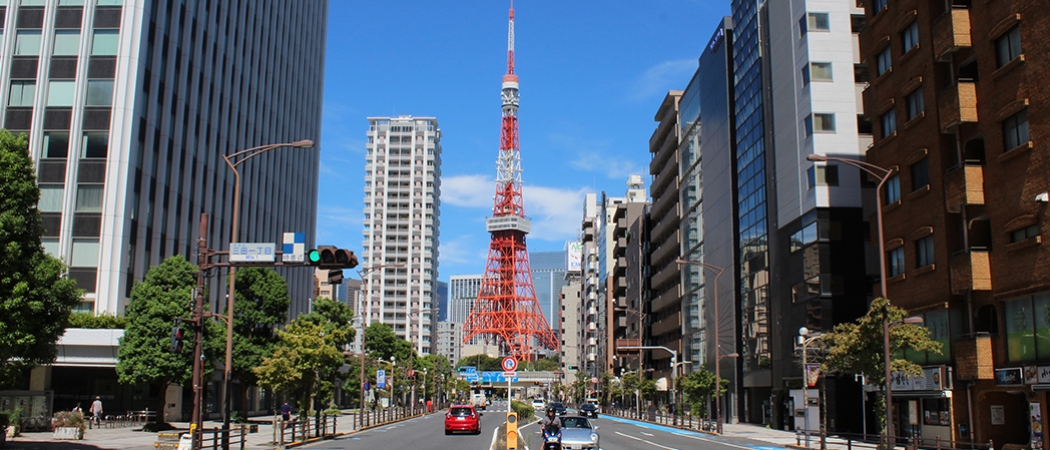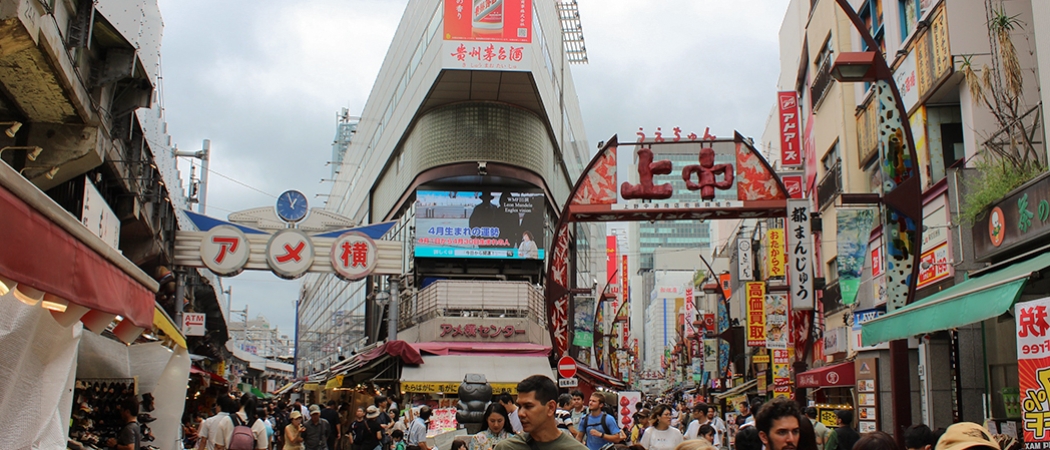
Status: Away - Japan
Mount Fuji, cherry blossoms, Shinto shrines and world-class public transportation—Japan’s so iconic, it’s hard to find just one thing to love.
Thankfully, our colleague Roberto L. recently went on a trip to the Land of the Rising Sun, and he’s got all the insider tips for making the most out of any trip to Japan, especially if you’re visiting Tokyo or Osaka.

Getting around
What was your first impression?
It was amazing. You can find a lot of videos about Japan online, and you’ll read a lot leading up to your trip, but when you experience it in person, you realize it’s everything you imagined and more. My expectations were subverted in a very positive way.
How long did you stay for?
Sixteen days total. We spent 5 days in Tokyo, 3 days in Fujiyoshida, where we stayed in a capsule hotel, and 7 days in Osaka.
What were the capsule hotels like?
It’s kind of like a big warehouse split into two sections for men and women, with a giant bathroom connecting the wings. Each wing has two levels of rooms, and you enter through a hole in the wall. Inside, it’s about the size of a twin bed. You can’t stand in there so it's really just a mattress and a space to store some of your things.
How did you get around while you were there?
Japan’s public transit is famous for its efficiency, and the country is covered with train, metro and bus lines. We used public transit the entire time, and took the Shinkansen (the bullet train), to get between cities. You can actually get a transit card usable in the entire country, the SUICA. It’s prepaid and you can add it to your phone’s virtual wallet.
Many of the subway lines will take you directly to tourist attractions. In Tokyo, you can take the metro straight to the Tokyo Sky Tree, Sensō-ji Temple and the Imperial Palace, for example.
From Tokyo, we went by bus to Fujiyoshima for mountain views as well as the Fujiyo Highland amusement park. After, we took the Shinkansen to Osaka and used it as a base to visit other places in the south, like Kobe and Nara, before heading back up to Tokyo.
Did you notice any interesting forms of transportation?
There were a ton of electric unicycles. Even on crowded streets, you’d see people weaving through crowds on sidewalks.

Eats and treats
What kind of food did you eat in Japan?
Japan is famous for its seafood, and we enjoyed conveyor belt sushi a few times, but we mostly ate meat. In fact, the best meat I’ve had was in Japan; the Japanese really enjoy it because of how pervasive American culture is there. When you imagine the country, you think of sashimi and other fresh fish dishes, so I was very surprised when I found out they love fried chicken.
In general, food is very cheap, and you can enjoy a whole meal for $5. Across the country are convenience stores like Lawson or Family Mart, and they all sell fried chicken and pre-packaged foods.
Any restaurants or dishes you’d like to recommend?
The best meal we had in Tokyo was at this restaurant called Steak Lodge. We ate wagyu beef with caramelized onions, mashed potatoes and cabbage, all served in a hot stone bowl which cooks the meat as you eat.
We also had ramen in Osaka, which is known as Japan’s kitchen. There’s a ton of variety in the local cuisine, and best of all, the restaurants in Osaka are open 24 hours. We happened to go to Ichiran Ramen Dotonbori at 3:00 a.m. but I promise the ramen is delicious there any time of day.
Plus, you really wouldn’t expect it, but Lawson, the convenience store, has some of the best fried chicken I’ve ever had.

What to see, do and notice
Any activities you’d recommend doing?
In Tokyo, I’d recommend taking a half-day to visit Sensō-ji Temple and the Tokyo Sky Tree. You could also visit the Tokyo Tower which is a great place for a photo. There are even marked spots where people line up to get a perfect picture. Shibuya Crossing is another iconic site, and if you’re an anime fan, you need to visit Akihabara District.
If you want to explore the south, I recommend staying in Osaka because it’s a great launchpad to some really interesting places. We took a day trip to Himeji to see Japan’s largest and most famous castle, and another to Kobe to try its world-famous beef. We also took a trip to Nara, where you can hand-feed the wild deer that roam its city park. Street vendors sell crackers you can feed the deer with, and the deer know this, so they’ll follow you around until you give them one.
Osaka itself has some really great attractions as well. Osaka Castle is a must-see, and the Dotonbori district has incredible nightlife, as well as some of the best food in Japan. Every restaurant has a miniature diorama of its dishes up front, so you can get a real sense of what they serve.
Anything you wish you’d done?
I would have loved to visit Kyoto to see its temples. Kyoto was the capital of Japan until 1869, and it managed to avoid being damaged during the war, so many of the temples there are original. However, there’s not much public transport there as it’s such an old city.
There’s also this waterfall noodle restaurant near Kyoto where you need to fish your own noodles from a stream called Hirobun Nagashi Somen, which I would have loved to experience. Since we didn’t rent a car, we weren’t able to go as it’s quite far from the city. In Kyoto alone, I marked over 20 temples to visit, but most of them aren’t reachable by public transit. The famous red torii gates at Fushimi-inari are also in Kyoto, so there’s quite a bit to see in that area.
Did you notice any interesting local wildlife?
There are no squirrels, pigeons or sparrows in Japan, but there are a lot of crows. There are crows everywhere, and because they’re such smart animals, they can open trash cans and other containers. I found out that if a crow stares at you, it’s considered unlucky. In general, there aren’t a lot of animals in the city, except for Nara, which has a park full of deer.
How does the street style compare to back home?
You might notice that all the children are very smartly dressed, and that’s because every schoolchild in Japan wears a uniform. In general, people are dressed very modestly and neatly. Skincare is very big in Japan, so people are hyper aware of sun protection, and don’t show a lot of skin. If you see people wearing short sleeves or crop tops, they’re probably tourists.

Final thoughts
Is there anything you wish you knew about Japan before you went?
Everyone prefers to pay in cash and you’re going to end up with a lot of coins. If there’s 1 cent change, you’re going to get that cent, which they still have coins for, so it’s a good idea to bring a coin purse. A lot of places also don’t take card, especially out in the countryside, where people don’t generally speak English.
Respect and courtesy are also very important in Japan. Many people will bow when they speak to you, and no one talks on the metro at all because it’s considered rude, so I’d be aware of some of these practices.
Is there anything you wish you packed before your trip? Is there anything you recommend people pack?
I'd make sure to pack hats and sunscreen because the sun is intense. Even in September, I had to reapply sunscreen multiple times a day. You should also pack comfortable shoes as you’ll be walking a lot, even while taking public transit around the stations. I’d also recommend downloading a subway map to your phone as they can be complex.
